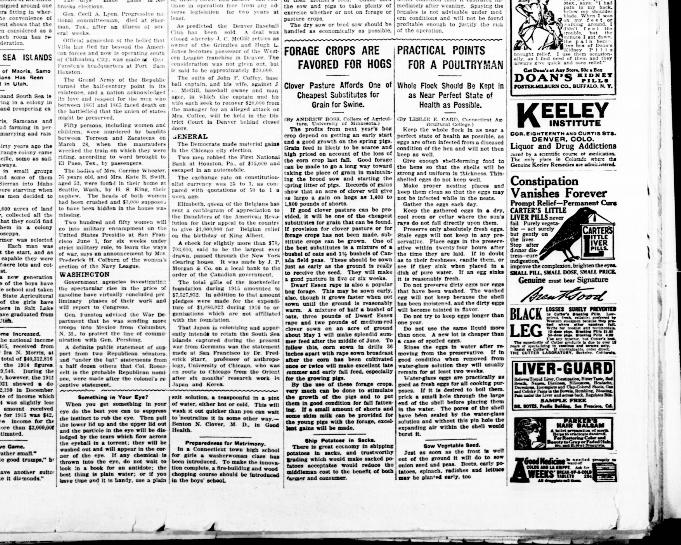|
Moderated by NW Okie! |
Volume 16 , Issue 192014Weekly eZine: (374 subscribers)Subscribe | Unsubscribe Using Desktop... |
1916 Forage Crops Are Favored For Hogs

It was 16 April 1916, page 6 of the Tombstone Weekly Epitaph, we find Forage Crops Are Favored For Hogs, written by Andrew Boss, College of Agriculture, University of Minnesota. Clover pasture afforded one of the cheapest substitutes for grain for swine.
The profits from next years (1917) hog crop depended on getting an early start and a good growth on the spring pigs. Grain feed was likely to be scarce and high priced on account of the loss of the corn drop in the Fall. Food forage can be made to go a long way toward taking the place of grain in maintaining the brood sow and starting the spring litter of pigs. Records of gains showed that an acre of clover would give as large a gain on hog as 1,400 to 1,800 pounds of shorts.
It was reported that if good clover pasture could be provided, it would be one of the cheapest substitutes for grain that could be found in 1916. If provision for clover pasture or for forage crops had not been made, substitute crops can be grown. One of the best substitutes was a mixture of a bushel of oats and 1 1/2 bushels of Canada field peas. These should be sown just as early as the ground is ready to receive the seed. They would make a good pasture in five or six weeks.
Dwarf Essex rape was also a popular hog forage. This may be sown early, also, though it grows faster when not sown until the ground was reasonably warm. A mixture of half a bushel of oats, three pounds of Dwarf Essex rape and two pounds of medium red clover sown on an acre of ground about May 1 would make a splendid summer feed after the middle of June. To follow this, corn sown in drills 36 inches apart with rape sown broadcast after the corn had been cultivated once or twice would make excellent late summer and early fall feed, especially for the growing pigs.
It was reported in 1916 that by the use of these forage crops, very much can be done to stimulate the growth of the pigs and to put them in good condition for fall fattening. If a small amount of shorts and some skim milk could be provided for the young pigs wight he forage, excellent gains would be made.
| View or Add Comments (0 Comments)
| Receive
updates ( subscribers) |
Unsubscribe
| © . Linda Mcgill Wagner - began © 1999 Contact Me | |
